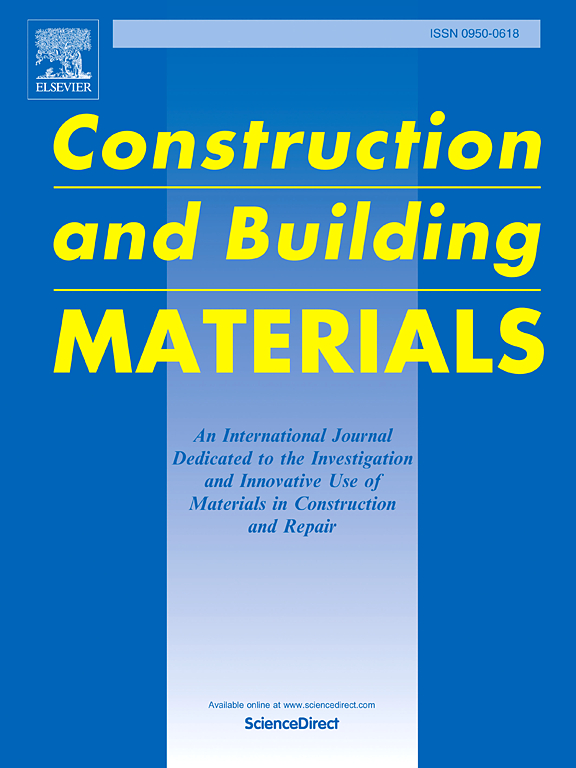Influence of steam curing on the optimum sulfate content in limestone calcined clay cement (LC³)
IF 7.4
1区 工程技术
Q1 CONSTRUCTION & BUILDING TECHNOLOGY
引用次数: 0
Abstract
LC³ cement reduces carbon dioxide emissions by 40 % compared to Portland cement, substituting 45 % of the clinker with calcined clay and limestone. To ensure optimal performance, gypsum content must be optimized, as the high surface area of additions increases sulfate demand. Curing temperature and time also impacts hydration, phase stability, and mechanical properties, requiring sulfate adjustments. This study investigates how curing parameters influence hydration, microstructure, and performance of LC³ cements to optimize sulfate content. LC³ pastes with up to 3 % extra gypsum were cured at ambient (25 ± 2°C, Ur>95 %) and steam conditions (40–60°C, 4–16 hours, Ur>95 %). Results showed that isothermal calorimetry and bound water content alone cannot determine optimal sulfate levels. maximum mechanical strengths were obtained with 2–3 % gypsum, with the influence of temperature predominating over time after 10 hours of curing. At 60°C, higher sulfate content promoted sulfate adsorption by C-(A)-S-H gel over ettringite formation.
蒸汽养护对石灰石煅烧粘土水泥中最佳硫酸盐含量(LC³)的影响
与波特兰水泥相比,LC³ 水泥减少了40% %的二氧化碳排放量,用煅烧粘土和石灰石代替了45% %的熟料。为了确保最佳性能,石膏含量必须优化,因为添加物的高表面积增加了硫酸盐的需求。固化温度和时间也影响水化,相稳定性和机械性能,需要硫酸盐调整。研究了养护参数对LC³ 水泥水化、微观结构和性能的影响,以优化硫酸盐含量。LC³ 膏体在环境(25 ± 2°C, Ur>95 %)和蒸汽条件(40-60°C, 4-16 小时,Ur>95 %)下固化,石膏含量高达3 %。结果表明,单靠等温量热法和结合水不能确定最佳硫酸盐含量。2-3 %石膏的机械强度最大,养护10 小时后,温度对时间的影响最大。在60℃时,较高的硫酸盐含量促进了C-(A)- s - h凝胶对钙矾石形成的硫酸盐的吸附。
本文章由计算机程序翻译,如有差异,请以英文原文为准。
求助全文
约1分钟内获得全文
求助全文
来源期刊

Construction and Building Materials
工程技术-材料科学:综合
CiteScore
13.80
自引率
21.60%
发文量
3632
审稿时长
82 days
期刊介绍:
Construction and Building Materials offers an international platform for sharing innovative and original research and development in the realm of construction and building materials, along with their practical applications in new projects and repair practices. The journal publishes a diverse array of pioneering research and application papers, detailing laboratory investigations and, to a limited extent, numerical analyses or reports on full-scale projects. Multi-part papers are discouraged.
Additionally, Construction and Building Materials features comprehensive case studies and insightful review articles that contribute to new insights in the field. Our focus is on papers related to construction materials, excluding those on structural engineering, geotechnics, and unbound highway layers. Covered materials and technologies encompass cement, concrete reinforcement, bricks and mortars, additives, corrosion technology, ceramics, timber, steel, polymers, glass fibers, recycled materials, bamboo, rammed earth, non-conventional building materials, bituminous materials, and applications in railway materials.
 求助内容:
求助内容: 应助结果提醒方式:
应助结果提醒方式:


